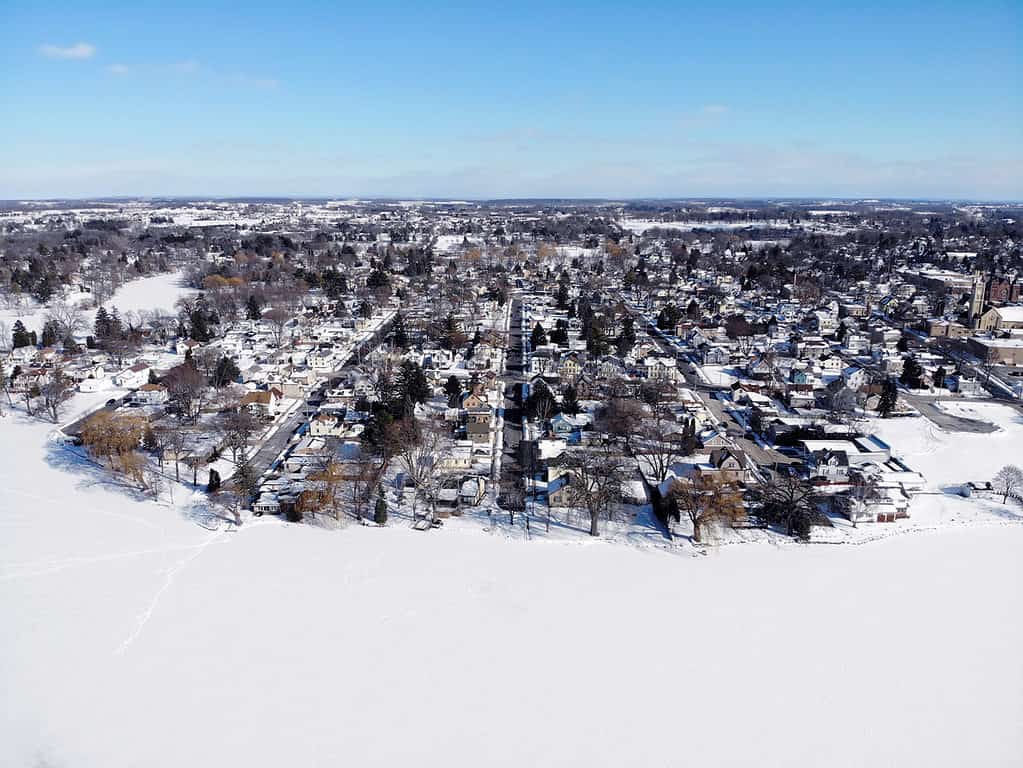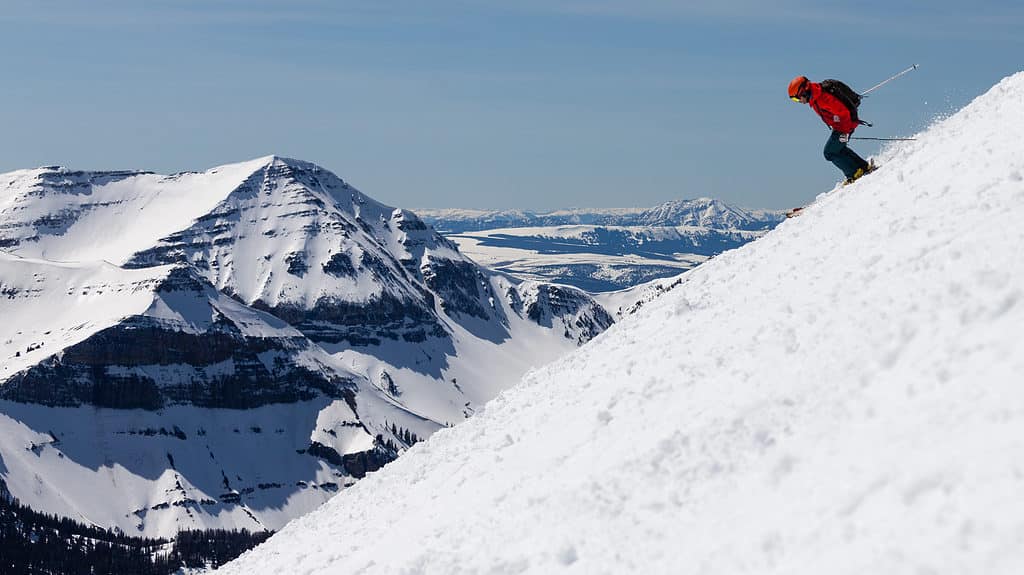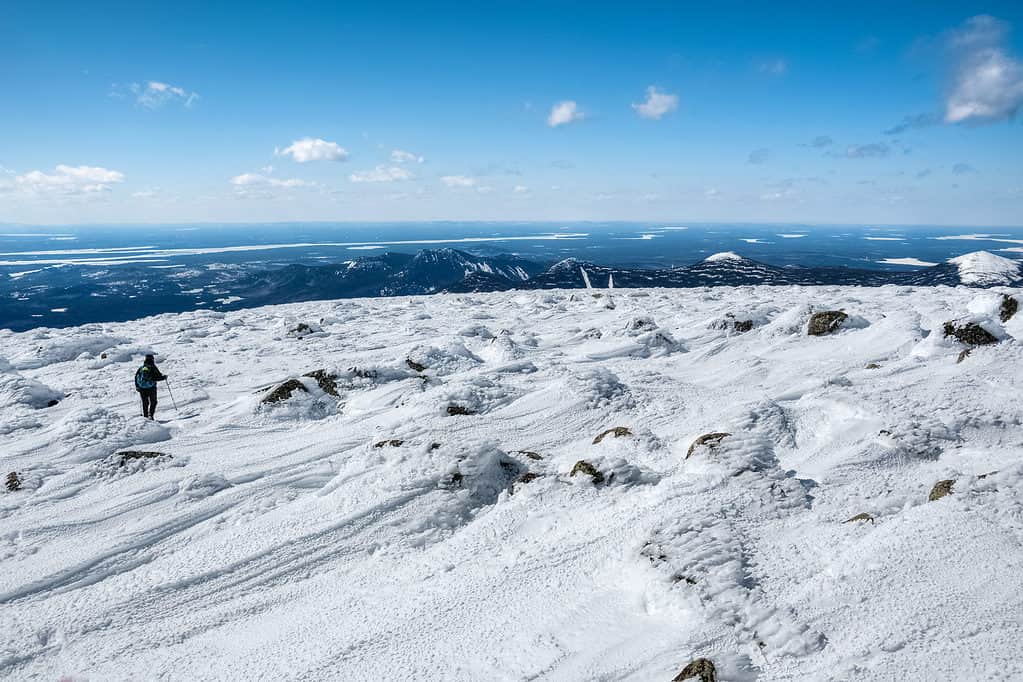Most northerners look forward to the seasonal change in March, after months of intense snowfall, freezing cold temperatures, and harsh winds.
However, March weather can be somewhat discouraging in some places. As a result, you may end up getting more cabin fever instead of fresh spring air.
Meteorologists recognize the start of spring on March 1, but the vernal equinox, which heralds the onset of spring, takes place around March 20 every year. Thus, most of the month takes place during a tricky time in between seasons.
The upper Midwest, east coast, west coast, Rockies, and High Plains typically experience March snowstorms. On average, Billings, Montana and Denver, Colorado are two cities that experience the most snowfall in March. Some parts of the south may receive snow on rare occasions. In March, there’s an interesting contrast between the warming weather in the south and the residual cold air in the north. These warm-cold air collisions inevitably produce heavy snowstorms, which may occur even in regions where spring comes early.
Here is a round-up of the seven coldest states in March!
#1 Wisconsin

Wintertime lows of -40 °F are recorded in more than half of the winters, while northern regions record lows of -30 °F or lower almost every year.
©iStock.com/quinntheislander
Located in the Upper Midwest, Wisconsin has a typical continental climate slightly modified by the surrounding lakes. The state lies between Lake Superior, Upper Michigan, Lake Michigan, and the Mississippi and Saint Croix Rivers. It shares borders with Lake Superior to the north, Minnesota to the west, Lake Michigan to the east, and Illinois to the south.
Wintertime lows of -40 °F or colder are recorded in more than half of the winters, while northern regions record lows of -30 °F or lower almost every year. The state experienced its lowest temperature of -55°F on February 4, 1996, at Couderay. On July 13, 1936, the highest temperature on record, 114 °F, was recorded at Wisconsin Dells.
The chilly, snowy winters are ideal for many winter adventures, while tourists are attracted to the sunny summers. According to the 2020 census, Wisconsin has a population of over 5.8 million. Its largest city, Milwaukee, is one of the coldest U.S. cities in March, with a maximum average temperature of 38 °F and a minimum average temperature of 27 °F.
Wisconsin is home to 668 native vertebrate species. Snails, dragonflies, mussels, and many other species of invertebrates can also be found there.
#2 Michigan

In March, Michigan hosts some of the coldest cities in the country.
©Ralf Broskvar/Shutterstock.com
The Great Lake State (the only U.S. state bordered by four of the five Great Lakes) sees significant seasonal temperature variations, with hot, humid summers and chilly winters. Michigan also hosts some of the coldest cities in the country in March. The maximum average temperature for March is 42 °F, while the minimum average temperature is 24 °F.
The state’s climate is moderated by the Great Lakes, making it more temperate and humid than other north-central states. Lakes Superior, Huron, and Michigan are the Upper Peninsula’s northern, southern, and eastern neighbors. The Lower Peninsula has Lake Michigan to the west and Lakes Huron and Erie to the east.
Michigan has two separate regions connected by the Mackinac Bridge, yet it has a continental climate overall. Some areas of the state see average highs below freezing from December to February. The regions in the far north experience these cold temperatures into early March.
The state is reputed for its wide range of fascinating wildlife, such as deer, moose, bears, birds, cougars, snakes, and groundhogs. The lowest temperature ever recorded was -51 °F on February 9, 1934, at Vanderbilt, while the highest was 112 °F in Mio on July 13, 1936.
#3 Montana

Depending on what region of the state you’re in, the weather in Montana in March may still be cold and snowy.
©alexfe/Shutterstock.com
Montana is a mountain state in the western U.S. subregion. It’s the fourth largest state in the country, after Alaska, Texas, and California. However, it’s the eighth least populous state, with only 1.8 million residents as of 2020.
It’s also the only state that shares borders with three Canadian provinces; British Columbia, Alberta, and Saskatchewan are to the north. To the east, it shares boundaries with North and South Dakota, while Wyoming lies to the south.
Montana’s western and eastern regions have varied climates. Winters are moderate and summers are cool in the western Rocky Mountain area. The proximity of the Pacific Ocean to this part of the state has an impact. However, the state doesn’t have direct access to the coast. In eastern Montana, there are harsh winters and hot, arid summers.
Depending on what region of the state you’re in, the weather in Montana in March may still be cold and snowy. While higher elevations are most likely to experience snowfall, the weather in valleys can vary from sunny to downright miserably frigid.
During March, daily high temperatures rise by 9°F, shifting from 40°F to 49°F. Additionally, the daily lows rise by 7°F, transitioning from 20°F to 27°F. The coldest temperature in the contiguous United States was recorded in Montana. A gold mining camp in Rogers Pass measured an astounding -70 °F on January 20, 1954.
Bighorn sheep, moose, grizzly bears, Rocky Mountain goats, and gray wolves are species found in high numbers in Montana’s mountainous regions. Other animals found in the mountains include black bears, mountain lions, American elk, bobcats, and mule deer. Additionally, bald eagles, beavers, swans, ducks, mink, geese, and white-tailed deer inhabit most portions of the state.
#4 Minnesota

Minnesota experienced its coldest temperature on record at −60 °F in February 1996 in the city of Tower.
©Karla Caspari/Shutterstock.com
The North Star state of Minnesota is in the Upper Midwestern part of the country. It has over 5.7 million inhabitants, making it the 22nd most populous state. Minnesota is popularly nicknamed the “Land of 10,000 Lakes” due to its abundance of lakes, lush grasslands, and large expanses of woods.
In Minnesota, cold winters and mild summers characterize the continental climate, with spring marking a significant transitional period. Snowstorms are frequent in the early spring (March to early April), although temperatures warm by late spring. Below freezing temperatures are typical of Minnesota winters, with significant snowfall between November and April. On average, Minnesota experiences two blizzards per winter.
Minnesota experienced its coldest temperature on record at −60 °F in February 1996 in the city of Tower. The highest ever recorded temperature was 114 °F at Moorhead in July of 1936.
The state is endowed with wildlife across all categories, including rare species. Ring-necked pheasants, gyrfalcons, and great horned owls dot Minnesota’s skies. Mammal species include muskrats, squirrels, gray wolves, weasels, and American martens. You can also find reptiles and amphibians, such as garter snakes, western chorus frogs, prairie skinks, northern map turtles, rattlesnakes, and eastern red-backed salamanders.
#5 New York

March is the last of the coldest months in New York, and it’s far more like winter than spring.
©John A. Anderson/Shutterstock.com
New York state, within the northeastern portion of the country, is the union’s fourth-most populated state with 20.2 million inhabitants. In addition to having international borders with the Canadian provinces of Quebec to the north and Ontario to the northwest, the state is connected to New Jersey and Pennsylvania on the south, and Connecticut, Massachusetts, and Vermont on the east. It also shares a maritime border with Rhode Island.
March is the last of the coldest months in New York, and it’s far more like winter than spring. The typical temperature in New York in March ranges from 36 °F to 50 °F, with at least one snowstorm occurring. The weather remains winter-like until the very last day of the month.
On July 22, 1926, New York saw a record-breaking high of 108 °F. Conversely, the state set a record-low temperature record of −52 °F in the winter of 1979.
New York is home to hundreds of species of wildlife. Coyotes, mallards, deer, red foxes, and raccoons inhabit the state.
The climate in New York is typically humid continental. Two continental air masses—one warm and humid from the southwest and the other cold and dry from the northwest—significantly impact the weather in New York.
#6 Maine

Maine gets long, chilly, and extremely snowy winters.
©David Boutin/Shutterstock.com
Maine is the north easternmost state in the U.S. and the largest of the six New England states in terms of area. With about 1.36 million people, the state has the lowest population density east of the Mississippi River. With more than 80% of its land area covered by forests, Maine has the most tree cover of any state.
Québec and New Brunswick, two Canadian provinces, are on Maine’s northern and northeastern borders. In the southeast, the state is bordered by the Gulf of Maine; in the southwest, it shares a border with New Hampshire.
Maine gets warm, occasionally humid summers and long, chilly, and extremely snowy winters. Coastal locations experience slightly warmer winters and colder summers than inland areas, due to the Atlantic Ocean’s moderating effect. However, winters in the northern and western parts of the state are particularly harsh.
The average temperature in March is roughly 32 °F, rising slightly during the day and falling at night. North Bridgton in July of 1911 had the highest temperature ever recorded in the state, 105 °F.
The state’s moose and black bear populations are among the largest in the lower 48. In addition, you might encounter the American marten, the white-tail deer, or the flying squirrel if you explore Maine’s forested or mountainous regions. Maine also has 292 bird species across suitable habitats. Wild turkey, American oystercatcher, blue jays, blue-winged warbler, and peregrine falcons are some examples. According to the state’s Department of Inland Fisheries and Wildlife, Maine hosts over 16,000 species of land and freshwater invertebrates and 34 different nonmarine reptile and amphibian species. The invertebrates include mayflies, butterflies, mussels, and beetles.
#7 New Hampshire

March is typically cold and windy, with temperatures ranging from a high of 49°F to a low of 30°F.
©Diana Nault/Shutterstock.com
The climate of New Hampshire is characterized by warm, humid summers and long, freezing winters. The coldest temperature the state has seen was -47 °F, recorded on January 29, 1934, near the summit of Mount Washington. The hottest temperature ever recorded was 106 °F on July 4, 1911.
March is typically cold and windy, with temperatures ranging from a high of 49°F to a low of 30°F. There is also a slight possibility of rain.
With just over 1.3 million citizens, New Hampshire has the tenth-lowest population among the 50 states. This northeastern state has a range of wildlife, including New England cottontail, monarch butterfly, bald eagle, common nighthawk, fisher, and snowshoe hare.
Up Next:
- Discover the Coldest Place in Maine (-50°F!)
- Discover the Coldest Place in Montana (-70°F!)
- What Happens When the Mississippi River Freezes Over?
The photo featured at the top of this post is © Visit Finger Lakes / Flickr – License / Original
Thank you for reading! Have some feedback for us? Contact the AZ Animals editorial team.






